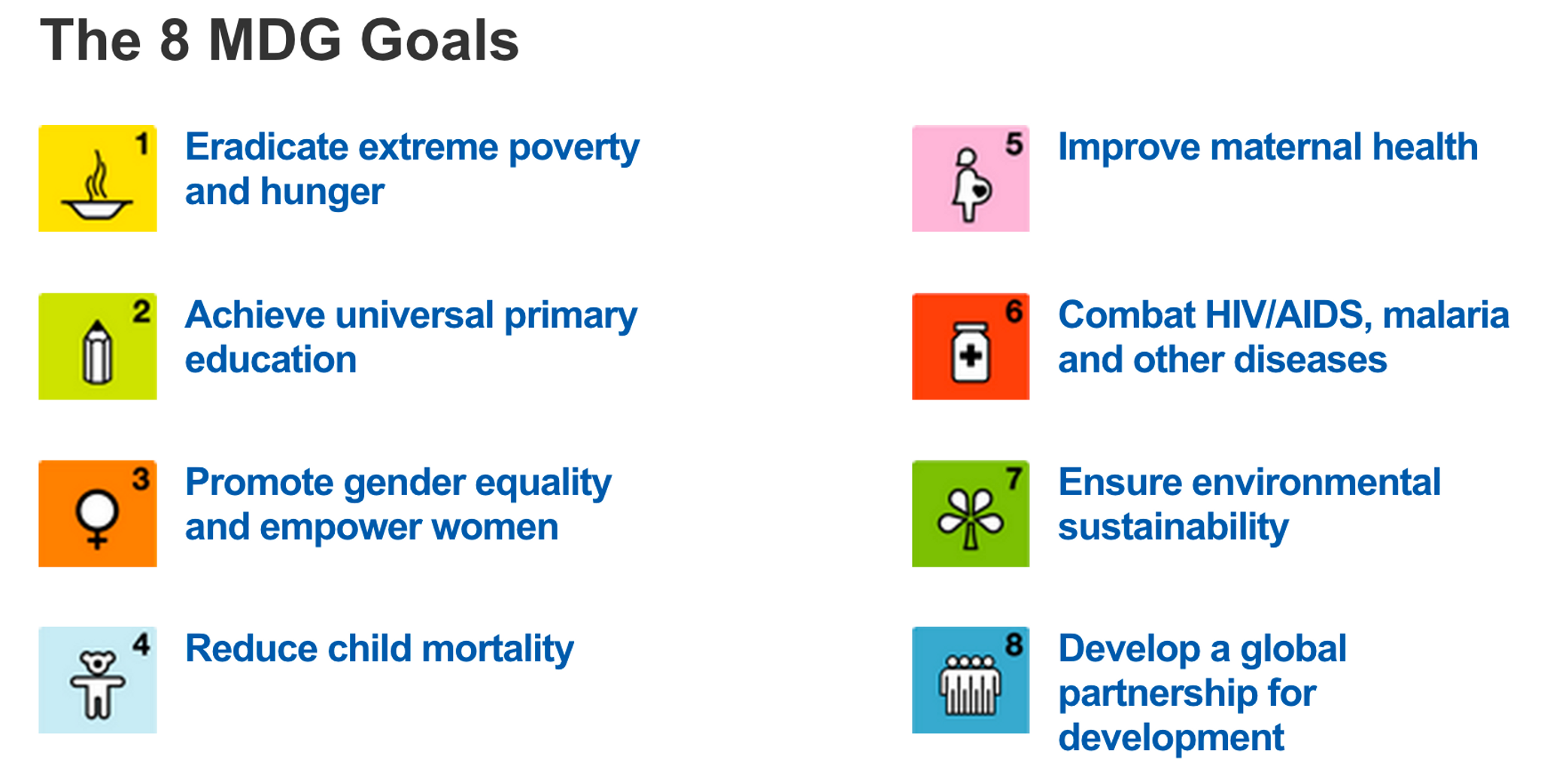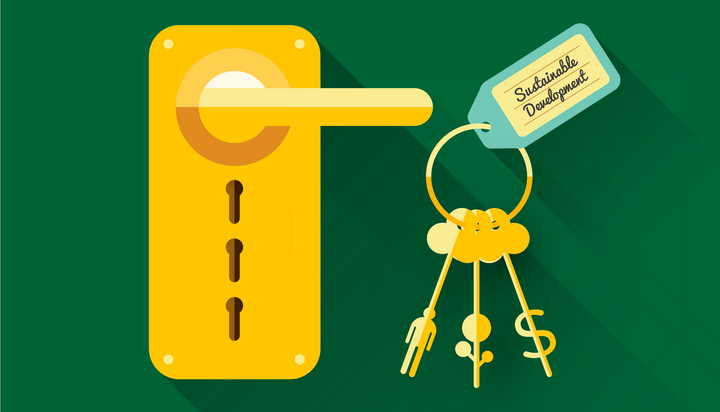What goals should guide international development?
– Miriam Kelberg
The Millennium Development Goals expire in 2015. What’s different about the proposed post-2015 development agenda?
At the Millennium Summit in the year 2000, the United Nations created the Millennium Development Goals (MDGs), eight aims for international development in key areas including poverty, school enrollment, and child mortality. The MDGs were a historic effort to coordinate myriad global development missions that had never truly been unified before.

Fifteen years later, the MDGs’ December 2015 expiration date is approaching. Now, the international community is working to continue the legacy with a new set of objectives: the Sustainable Development Goals (SDGs), which will likely be adopted at the UN General Assembly in September 2015. As the name suggests, the new goals have an environmental scope — an acknowledgement that the environment and healthy human development are interdependent. In an attempt to address the shortcomings of its predecessor, the 2015 Sustainable Development Goals differ in several important ways.
New Voices
Despite their international scope, the 2000 MDGs did not derive from a particularly inclusive negotiation process. The MDGs, writes Andrea Ordóñez of Southern Voices, “are sometimes considered donor driven, pushed by developed countries onto developing ones.” The real authors of the MDGs, it turns out, were technocrats from the developed world, who, argues Ordóñez, took little to no input from the Global South. This raises serious questions: this is “development” for whom? By whom? This time around, says Ordóñez, “The process to design a new development agenda is now unthinkable without the debate and participation of the Global South.” Many of these excluded countries are now demanding a voice.
In 2012, the UN Open Working Group began the negotiations for the post-2015 SDGs, with 20 of the 30 seats filled by representatives from countries in Africa, Asia, and Latin America. Public officials, journalists, nongovernmental organizations, and academics all over the world have participated, and more than 7.5 million individuals have voiced their perspectives through the World We Want Initiative, sharing their visions for the shape and aims of international development efforts.
Good governance, what is it good for?
A commitment to “good governance” is another new concept for the 2015 SDGs. “Good governance” means an accountable, transparent government that fights corruption, assures equal treatment, and seeks to protect its most vulnerable citizens. States with characteristics of good governance have been found to have a better capacity to tackle poverty.
Good governance did not figure into the MDGs. At the time, the concept was stigmatized by comparisons to unpopular IMF and World Bank policies in the 1990s that made loans contingent on economic liberalization. But this time around, good governance remained on the table. The World We Want Initiative contributed data on the subject: surveying individuals and asking them to rank sixteen key development goals, their study found that good governance was, on average, one of the top concerns.
Framing fair government as a key ingredient for development elevates the issue, and not just for developing countries. Martin Edwards and Sthelyn Romero, researchers at Seton Hall University, argue developed countries ought to also use these goals to help propel better institutions domestically. In Europe, that may mean addressing the social cost of austerity. While “in the United States,” write Edwards and Romero, “ongoing challenges include the proper role of government surveillance, continuing controversies about voter registration, and the growing debate about the role of the police force.”
The post-2015 goal calls for good governance also at the international level. Critics of international bodies have long argued that these organizations merely reinforce the power of some countries over others. A good governance solution would entail equal representation of countries in international organizations, including the UN and the International Criminal Courts.
Good governance efforts have traditionally focused on national and international bodies. David Satterthwaite, senior fellow at the International Institute for Environment and Development, explains that exclusion of local governments from the SDG framework is problematic, given that the local levels often have the most immediate impact on individuals’ lives. Because they are closest to the people, they are integral to educating, mobilizing, and listening to the needs of the people.
While goals for local governance are missing from the SDGs, not much else is. Almost every major interest group has tried to write in their pet cause, resulting in 17 proposed goals and 169 targets.
How can this list of goals best be achieved in the post-2015 agenda? How can we successfully learn from the experiences with the Millennium Goals? Who implements them? Will they be merely symbolic?
Although much is left to be sorted out, it is clear that there has never been such a moment of global devotion to ending poverty. “Governments, businesses, scientists, philanthropists, and people from all walks of life are willing to contribute,” write Kharas and Zhang. “The challenge that remains is to merge these forces together to address the interlinked scourges of conflict, poverty, environmental degradation, and climate change and to create a life of dignity for all.”
The SDGs may, in fact, affect the course of this century. But the road to their realization is long. With ratification still three months away, the countries have their work cut out for them.
* * *
The Sources: Homi Kharas and Christine Zhang, “New Agenda, New Narrative: What Happens After 2015?,” SAIS Review of International Affairs 34, no. 2 (2014): 25-35.
Andrea Ordóñez, “Perspectives from the Global South on Post-2015,” SAIS Review of International Affairs 34, no. 2 (2014): 121-128.
Martin S. Edwards and Sthelyn Romero, “Governance and the Sustainable Development Goals: Changing the Game or More of the Same?,” SAIS Review of International Affairs 34, no. 2 (2014): 141-150.
David Satterthwaite, “Guiding the Goals: Empowering Local Actors,” SAIS Review of International Affairs 34, no. 2 (2014): 51-61.
Photo courtesy of The United Nations
